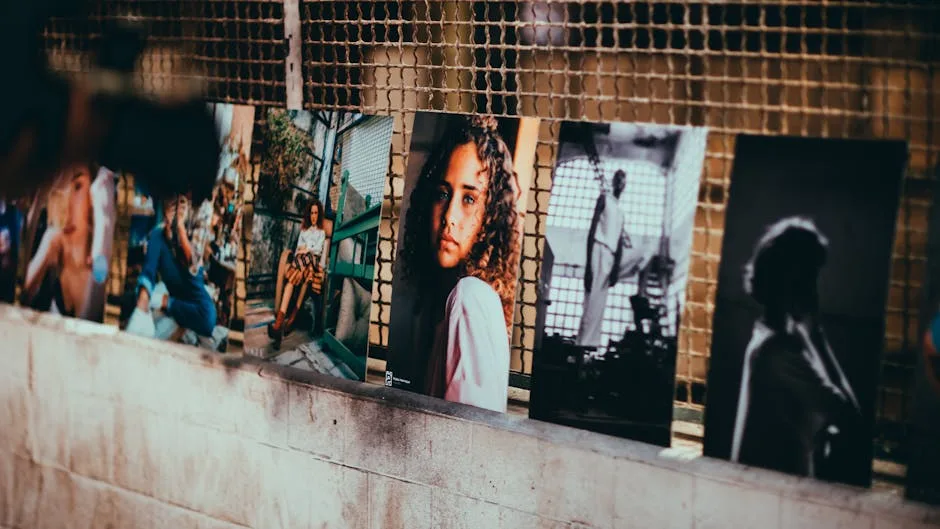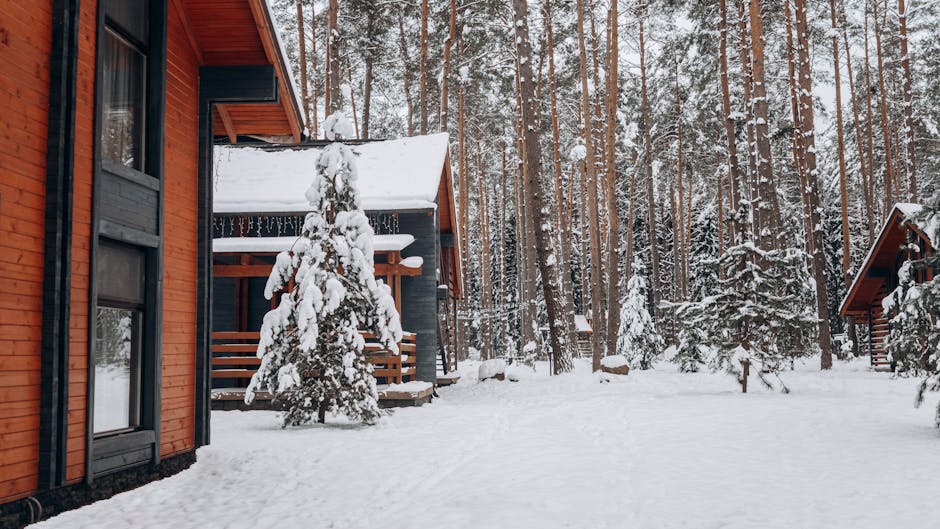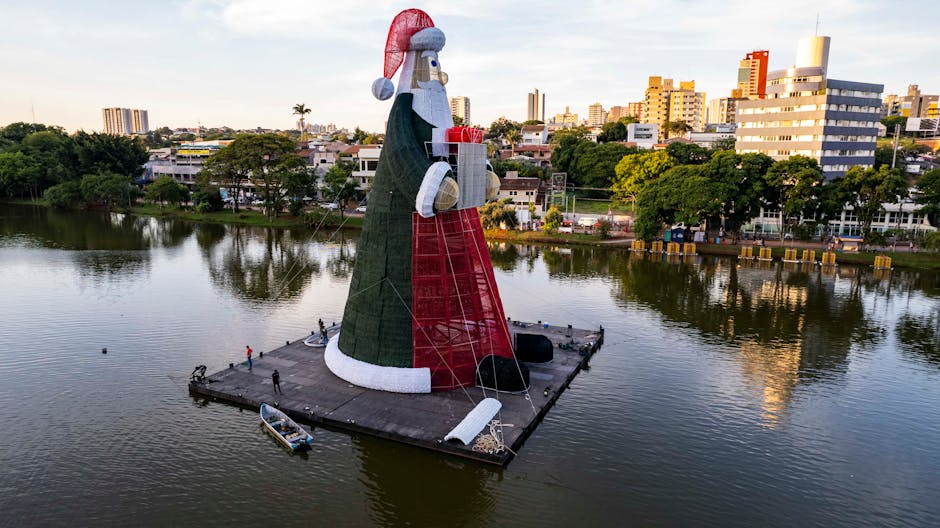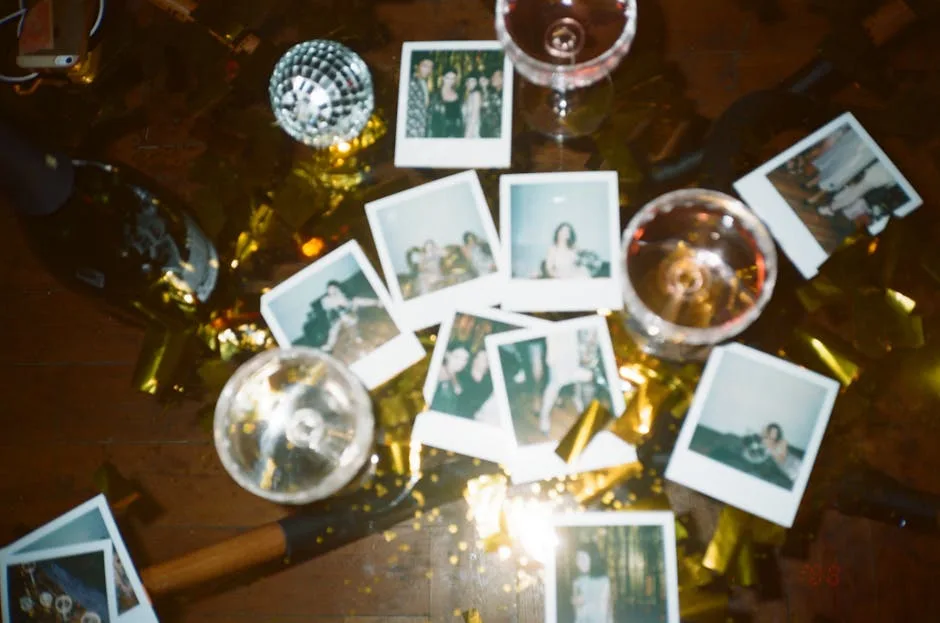The 1990s saw the emergence of a unique and vibrant subculture in the streets and favelas of Rio de Janeiro, known as funk culture. This phenomenon, deeply rooted in the socio-economic conditions of the city, was a manifestation of the creative expression and resilience of its residents. Rio de Janeiro during this period was marked by significant economic challenges, a growing gap between the wealthy and the impoverished, and complex social dynamics. In this context, music became a powerful tool for community building and social commentary.
Initially, funk culture in Rio de Janeiro drew heavily from American funk and hip-hop influences. Artists and DJs began importing these sounds, blending them with local rhythms to create a distinctive genre known as “Baile Funk” or “Funk Carioca.” The beats and basslines, initially inspired by African-American musical traditions, were reinterpreted to reflect the realities of life in Rio’s favelas. This adaptive innovation allowed funk music to resonate deeply with local youth, who found in it a voice for their experiences and struggles.
As funk culture evolved, it showcased not only its musical diversity but also its capacity to address pressing social issues. Lyrics often depicted themes of poverty, violence, and inequality, reflecting the everyday life of many residents. These narratives were imbued with a raw, unfiltered authenticity that mirrored the complexities of urban life in Rio de Janeiro at the time. Moreover, funk parties, known as “bailes,” became communal events, fostering a sense of solidarity and shared identity among participants.
By the end of the decade, funk culture had established itself as a significant cultural and social force in Rio de Janeiro. It provided a platform for marginalized voices and became an integral part of the city’s cultural fabric. This introduction merely scratches the surface of funk culture’s multifaceted nature, setting the stage for a deeper dive into the music, dance, fashion, and social impact that define this energetic movement.
Historical Context: Rio in the 1990s

The 1990s in Rio de Janeiro were marked by a complex interplay of socio-political and economic challenges that significantly shaped the city’s cultural landscape. During this period, Rio experienced substantial urban poverty and escalating crime rates, partly driven by the rapid expansion of favelas. These impoverished communities, located on the city’s peripheries, became emblematic of socio-economic disparities and were often overlooked by formal government support systems. Consequently, residents of the favelas sought alternative forms of expression and solidarity, paving the way for the development of unique cultural movements, such as funk music.
Funk, as an emerging cultural force in the 1990s, played a crucial role in giving a voice to marginalized communities in Rio. This music genre, characterized by its infectious rhythms and dynamic beats, emerged as a reflection of the societal issues faced by those in the favelas. Through its raw and unfiltered lyrics, funk became a medium for addressing themes of social injustice, violence, and inequality. Hence, it served not only as entertainment but also as a tool for social commentary, resonating deeply with the lived experiences of its audience.
Technological advancements during the 1990s also significantly contributed to the proliferation of funk music. The increased accessibility of media technology, such as affordable sound systems and recording equipment, enabled local artists to produce and share their music more widely. Furthermore, local radio stations and community events played a pivotal role in promoting funk, thereby ensuring its widespread reach across various social strata in Rio. The media coverage, paired with grassroots efforts, facilitated the growth of a robust cultural movement that transcended the confines of favelas.
In essence, the socio-political and economic milieu of 1990s Rio de Janeiro created fertile ground for the rise of funk. Amidst the adversities faced by its residents, funk music burgeoned as a powerful form of cultural expression that articulated the aspirations and grievances of an entire generation.
The Evolution of Funk Music
Funk music’s journey from American roots to Brazilian vibrance is a testament to cultural interplay. Initially influenced by the sounds of James Brown and George Clinton in the late 1960s and 70s, the genre found fertile ground in Rio de Janeiro. By the 90s, funk in Brazil had mutated into something uniquely vibrant, embedding itself deeply within Rio’s urban tapestry.
Key artists like DJ Marlboro and MC Marcinho emerged as pioneering forces, channeling the socio-political undercurrents of Rio’s favelas into their music. Their tracks, often characterized by gritty realism, addressed themes of poverty, violence, and survival, resonating powerfully within their communities. These lyrical narratives were accompanied by complex rhythmic structures, distinct from their American predecessors – often featuring rapid beats and electronic influences.
During the 90s, Brazilian funk music diversified into sub-genres like “Funk Carioca” and “Baile Funk”. Funk Carioca, sometimes referred to simply as “funk,” became synonymous with the Rio funk scene, marked by its high-energy, dance-driven sound and explicit lyricism. Parallelly, Baile Funk referred to the dance parties (bailes) where this music was played, becoming cultural hubs within favelas where people could gather, dance, and express themselves freely.
The role of these baile funk parties cannot be overstated. They were instrumental in popularizing funk music across Rio de Janeiro and beyond. Festivals like the Ferverão saw thousands of enthusiasts come together, and they were crucial in breaking down socio-economic barriers, albeit temporarily. These gatherings also facilitated the local adaptations of funk rhythms, incorporating elements of samba and Afro-Brazilian percussion, thereby fostering a distinct Brazilian identity within the genre.
Technological innovations in music production further spurred the evolution of Brazilian funk. Artists harnessed affordable electronic equipment to craft unique sounds and spread their music via burgeoning media channels, thus amplifying their reach. As a result, the 90s were a seminal period for Brazilian funk—melding indigenous musical traditions with global funk influences, creating a resilient genre that continues to evolve.
The emergence of funk culture in Rio de Janeiro during the 1990s presented an array of distinctive dance styles that became emblematic of this vibrant movement. Among these, the ‘passinho’ stands out as a quintessential expression of the era. Originating from the favelas, the passinho is a highly energetic and intricate dance routine characterized by swift footwork, acrobatic transitions, and rhythmic body movements. This dance was more than mere entertainment; it was a form of social commentary and personal expression that resonated profoundly among the youth. Other street dances also flourished, promoting a sense of community and collective identity at funk parties that were essential gatherings for fans and performers alike.
Funk parties, often held in nightclubs and open spaces within the favelas, were pulsating events that showcased a myriad of dance styles. These gatherings were not only venues for enjoying music but also for dancers to exhibit and refine their skills, often leading to impromptu dance battles that captivated audiences. The synergy between the music and dance was palpable, bringing a dynamic aspect to the funk scene that drew people from various backgrounds into the fold.
Alongside the dance revolution, a distinctive fashion aesthetic emerged that defined the funk culture of the 1990s. Funk fashion was marked by its bold, eclectic, and vibrant style. Participants often adorned themselves with brightly colored clothing, oversized t-shirts, baggy jeans, and sneakers that were both flashy and practical for dancing. Accessories such as chunky gold chains, baseball caps, and statement jewelry further amplified the look, offering a unique blend of street elegance and individual flair.
The overall street style embraced by the youth was a visual testament to the rebellious spirit and creative energy of the funk movement. This fashion was not just about appearance; it was a manifestation of self-identity, resilience, and solidarity within the marginalized communities. As such, funk dance and fashion were inextricably linked, each reinforcing the other and cementing their place in the rich tapestry of Rio’s cultural history.
Funk Parties and Events
During the 90s, Rio de Janeiro witnessed a transformative cultural phenomenon through the vibrancy of funk parties and events, often referred to as “baile funks.” These gatherings served as communal hubs where locals could immerse themselves in the pulsating rhythms of funk music, fostering a unique cultural identity within the city’s diverse neighborhoods. Held in both favelas and more established parts of the city, these parties not only provided entertainment but also played a pivotal role in the social fabric of Rio de Janeiro.
The atmosphere at baile funks was electric, characterized by enthusiastic crowds, dynamic dance moves, and booming sound systems. These events varied in scale, ranging from small clandestine parties to major public gatherings. In the favelas, where opportunities for large-scale formal entertainment were limited, baile funks emerged as an essential outlet for self-expression and community engagement. The sense of unity and shared experience created at these parties transcended socio-economic barriers, fostering a sense of belonging and resilience among attendees.
Organization of these events often required a deep understanding of local dynamics, including navigating institutional challenges. Despite occasional clashes with law enforcement and the broader societal stigma associated with funk culture, the resilience and adaptability of organizers ensured the continuity and popularity of these events. Furthermore, the proliferation of sound systems and the development of mobile DJ units played a significant role in overcoming logistical hurdles, bringing the music to even the most inaccessible parts of the city.
Prominent DJs and producers had a profound impact on the success and evolution of these events. Figures such as DJ Marlboro, DJ Grandmaster Raphael, and DJ Binho laid the groundwork for what funk music and baile funks would become. Their innovation in remixing tracks and creating unique beats gave these gatherings a distinct auditory identity, significantly influencing the musical landscape of the time. Through their efforts, they helped carve out a space for funk music within the broader Brazilian and international music scenes.
Overall, funk parties and events in Rio de Janeiro during the 90s epitomized the resilient, creative, and communal spirit of the time, leaving an indelible mark on the cultural history of the city.
Controversies and Challenges
The funk culture in Rio de Janeiro during the 1990s was imbued with complexities and faced an array of controversies and challenges. Among the most significant of these was the stigmatization of funk music due to its perceived association with violence and criminality. Many critics and segments of society labeled the genre as a catalyst for social issues, often pointing to the explicit lyrics and high-energy dance styles as problematic. This public perception led to widespread discrimination against funk artists and their fanbase, further marginalizing an already oppressed community.
Attempts at censorship became a recurring hurdle for the funk movement. Authorities frequently banned funk parties, or ‘bailes funk,’ citing concerns about public safety and the potential for violent outbreaks. These censorship efforts were often viewed as a direct attack on the free expression of favela communities, thereby solidifying the resistance of funk enthusiasts to state interference. The genre’s struggle for recognition was not merely a battle for its sonic dissemination, but also a fight for cultural representation and identity.
A significant conflict arose between funk artists and law enforcement. Police raids at bailes funk were common, sometimes resulting in violent confrontations. These actions intensified feelings of distrust and resentment towards law enforcement within the funk community. In this atmosphere of constant legal and social pressures, funk artists and organizers were compelled to navigate a labyrinth of legalities and societal expectations, just to keep their culture alive.
Furthermore, internal challenges within the funk community presented additional obstacles. Competition between artists was fierce, often leading to rivalries that could erupt into conflicts. Such rivalries were fueled by the quest for legitimacy and respect in the broader cultural landscape, which sometimes resulted in fractious relationships. Additionally, the struggle to be taken seriously in the mainstream music industry led many funk artists to grapple with issues of artistic authenticity and commercialization. Balancing the roots of their raw, grassroots culture with the demands of a commercialized industry posed a continual challenge.
Despite these myriad challenges, the funk movement showcased resilience and adaptability. The controversies surrounding the genre did not hinder its growth but rather bolstered the resolve of its artists and supporters to claim their space in Rio de Janeiro’s diverse cultural tapestry.“`html
Funk’s Influence on Wider Brazilian Culture
During the 1990s, funk culture in Rio de Janeiro transcended its niche origins, profoundly impacting Brazilian culture at large. This vibrant musical style began to influence a wide range of cultural aspects, integrating itself into mainstream music, television, and advertising. One of the most significant developments was the crossover of funk artists into the national spotlight. Performers like MC Marcinho and Claudinho & Buchecha broke through regional barriers, gaining popularity across the country and substantially altering the Brazilian music landscape.
As funk music began to dominate airwaves and dance floors, its influence spread beyond the realm of music. Television programs started incorporating funk into their segments, with telenovelas and variety shows leveraging its widespread appeal to boost viewership. The success of these adaptations further cemented funk’s status as a cornerstone of contemporary Brazilian culture.

Beyond media, funk permeated various facets of daily life, influencing fashion, language, and societal attitudes. The vibrant and often flamboyant styles associated with funk artists began to appear in the wardrobes of young Brazilians. Bright colors, bold accessories, and distinct hairstyles became emblematic of a new youth culture that drew inspiration from the funk scene. In language, slang originating from funk music entered the common vernacular, reflecting the genre’s growing social significance.
Advertisers quickly took notice of funk’s broad appeal, integrating its rhythms and aesthetics into marketing campaigns aimed at younger demographics. This commercialization of funk not only brought the genre more financial support but also further normalized its presence in mainstream Brazilian culture. Campaigns often featured well-known funk artists, creating a synergistic relationship where both the music and the products being advertised gained mutual exposure and popularity.
The 1990s marked a pivotal era where funk culture became deeply embedded in the broader Brazilian cultural fabric. Its influence went beyond entertainment, shaping the nation’s trends, language, and collective attitudes, ultimately highlighting the dynamic interplay between a subcultural movement and national identity.
Legacy and Modern Revival
The funk culture that burgeoned in Rio de Janeiro during the 90s has left an indelible mark on contemporary Brazilian society. This era laid the groundwork for a musical genre that continues to thrive, shaping the sounds and sensibilities of modern artists. The raw energy of 90s funk, coupled with its bold and unfiltered expression of the lived experiences of Rio’s marginalized communities, has cemented its place in the annals of Brazilian cultural history.
Many contemporary Brazilian musicians draw inspiration from this golden age of funk, weaving its influences into their own compositions. The rhythms, beats, and lyrical themes of 90s funk resonate deeply with today’s audiences, testifying to the genre’s enduring appeal. The legacy of artists such as MCs Cidinho and Doca, instrumental in propagating this culture, continues to influence and inspire the current generation of funk musicians. Through their innovative blending of traditional Brazilian sounds with contemporary urban beats, they paved the way for modern interpretations of funk that are celebrated both locally and internationally.
In recent years, there has been a notable revival of interest in 90s funk. This resurgence is characterized by a nostalgic appreciation for the authentic sounds and experiences of the era, as well as a renewed effort to preserve and reinterpret the cultural heritage. New generations, armed with digital platforms, are cataloging and sharing the funk music of the 90s, thereby ensuring its availability for posterity. Additionally, there are ongoing initiatives to educate younger audiences about the socio-political context of the era, which plays a crucial role in understanding and appreciating the essence of funk music.
The modern revival of 90s funk culture not only celebrates its historical significance but also breathes new life into it, fostering a dynamic cultural landscape where the past and present intersect seamlessly. This reflective yet innovative approach heralds a promising future for funk music, ensuring that its vibrant legacy will continue to influence and inspire for years to come.





